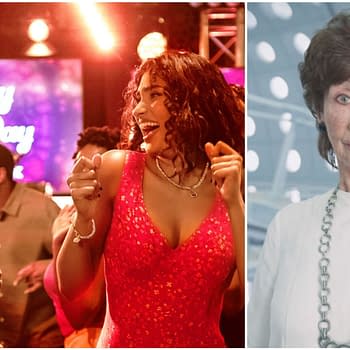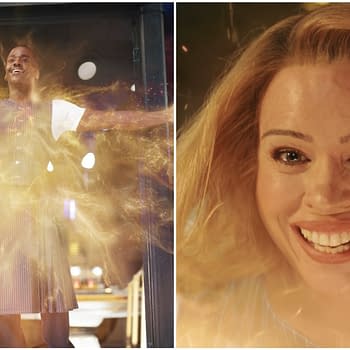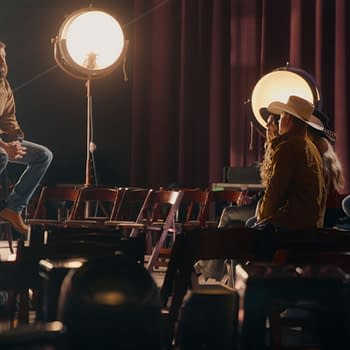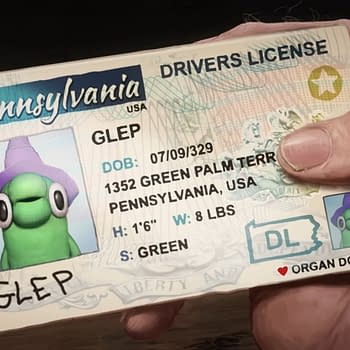Posted in: BBC, TV | Tagged: Adam Curtis, BAFTA, bbc, documentary, Paul Tickell, Russia 1989-1999: Traumazone, Zinky Boys Go Underground
Traumazone: Oh Dear, Did Adam Curtis Think My Movie Was a Documentary?
A new Adam Curtis documentary from the BBC is always a major cultural event. His latest, Russia 1989-1999: Traumazone, is another timely commentary on current events, so imagine my surprise when I discovered he used clips from a movie I wrote. And imagine my ambivalence when I realized that his using my movie might have compromised the integrity of his documentary. Did he think it was real?
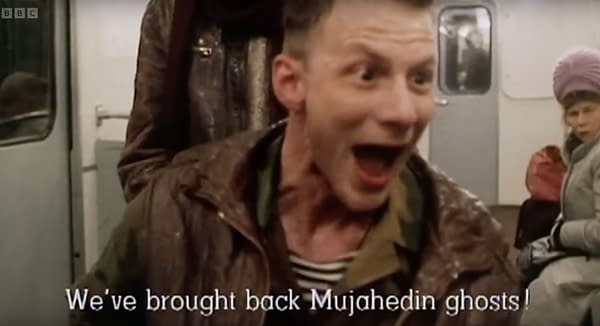
Russia 1989-1999: Traumazone is a typical Adam Curtis joint, even if it doesn't have any narration or expressed opinion. His use of found footage from decades of documentary footage the BBC shot in Russia that he unearthed and compiled from the archives speaks volumes, even without his voice providing a unique alternate reading of history and political events. Traumazone sets out to chronicle the collapse of Communism in the former Soviet Union as it transitioned to a Wild West Capitalism that ran so rampant that it also ultimately brought about the collapse of the new Russia's democracy as oligarchs leeched the country dry and paved the way for Vladimir Putin to take over and impose his strongman rule, which directly led to the current war on Ukraine.
The Surreal Nonfiction Eye of Adam Curtis
So under Adam Curtis' critical eye, we witness firsthand footage of the last years of the Soviet Union and the end of its occupation of Afghanistan, feet-on-the-ground segments of life in Russia: TV shows, factories manufacturing television sets, a beauty contest, a fashion shoot, a people's court trial of a woman who exploited a war veteran, the gradual collapse of Soviet control of Afghanistan, a nervous sex worker in a Moscow hotel bar making arrangements with a john to meet in his room, nationalist unrest in Tbilisi, a surreal clip of a bodybuilder parade, Gorbachev's introduction of limited capitalist policies that allowed Soviet citizens to make and sell goods for profit in his bid to save the Communist state, opening the floodgates to the eventual collapse of Communism and Soviet Russia. All this is just in part one, the first hour set in 1985 to 1989.
Then just past minute 53, he featured the opening scene of Zinky Boys Go Underground, a 1994 short film I wrote that was co-produced by the BBC and British Film Institute when I was still attending New York University film school. It was directed by my friend Paul Tickell and won the British Academy of Film and Television Arts Award (BAFTA) for Best Short Film in 1995, coincidentally on the day I graduated from film school.
So… I Guess Adam Curtis Liked My Movie?
My first reaction when I saw the clip from Zinky Boys Go Underground was, "Oh, cool," then "Oh, wait –, "then "Oh, shit!" From flattery to dismay. I don't really care about credit or payment for Adam Curtis' inclusion of the opening scene from the short film – it's fair use, after all. My dismay was remembering that 1) Russia 1989-1999: Traumazone purports to be a documentary using found footage of nonfiction shot by the BBC in Russia, 2) Zinky Boys Go Underground was Fiction, and 3) Traumazone Part One was labelled as being set from 1985 to 1989, and Zinky Boys Go Underground was written and set in 1993, not 1991. Surely Adam Curtis must have watched the whole 25 minutes and known it was a piece of fiction. The plot involved the hunt for a serial killer, for heaven's sake.
The question here is whether the inclusion of Zinky Boys Go Underground compromises the integrity of Russia 1989-1999: Traumazone since it's fiction and not set in 1991. You can see why Adam Curtis included the opening scene: it showed the plight of traumatized young veterans of the Afghan War after they returned to Russia and symbolized the chaos of Russia during Perestroika. Paul directed the film on location in St. Petersburg. Those are my lines, translated into Russian by the man who translated David Mamet's plays into Russian and spoken by Russian actors, directed by my friend. Surely Adam Curtis must know the short film was fiction and felt comfortable using it for Traumazone, but many viewers might think that clip from Zinky Boys was an actual on-the-ground documentary rather than a piece of fiction. Does that damage the documentary? I haven't watched the rest of Traumazone yet, so I don't know if more of its clips are in the documentary. Granted, there are clips from a Russian fantasy TV show, but those clips are clearly fiction with the actors in makeup and costumes, but Zinky Boys is different; a realistic drama that is not nonfiction. I'm a fan of Adam Curtis' works, but this question will keep spinning in my head when I watch the rest of Traumazone: is it ethical to use fiction and pass it off as reality in a documentary?
Russia 1989-1999: Traumazone is currently streaming on the BBC iPlayer in the UK.





